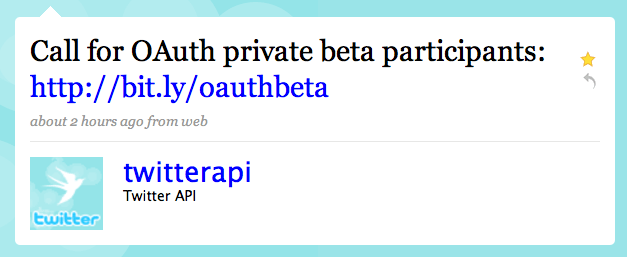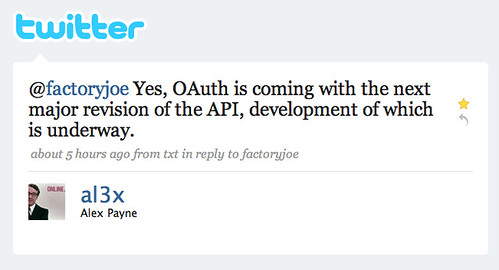Prompted by posts by Randy Reddig and Tony Stubblebine and a conversation with Elliott Kember, I wanted to address, yet again, the big fat stinking elephant in the room: OpenID usability and the paradox of choice.
Elliott proposed a pretty clear picture of what he thinks OpenID should look like on StackOverflow, given the relative value of each provider to him:
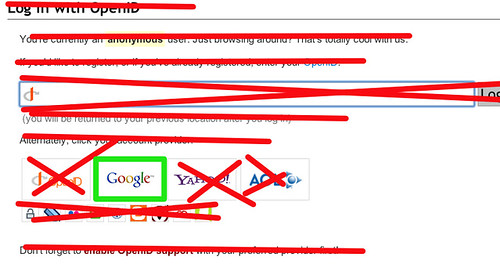
Compare that to how it actually looks today:

I’m with him. I get it.
We’re at this crossroads where it really doesn’t matter which OpenID provider you use — because while it might save you the hassle of creating yet another password — there’s little else that you can do with an OpenID beyond that.
And, if you’ve already got more than one OpenID, not much exists to help you decide which OpenID provider you should use (many people tell me: “I hate OpenID! I’ve got like 15 OpenIDs and I never know which one to use!”).
So on the one hand, we’ve done a poor job of building out the value of using an OpenID, and on the other, have failed to explain what it means to have an OpenID (or several) or how to go about deciding which one to use and why (hat tip to OpenID Explained for taking a crack at it).
Meanwhile, there’s a tension between the convenience of having one reusable and durable identity against the desire to express many aspects of one’s identity with many separate IDs, resulting in complex user interfaces.
Fortunately, OpenID as a technology can serve both needs, but communicating and demonstrating that effectively has remained a challenge.
Putting OpenID in context
For my part, I’ve used the metaphor of credit cards to try to explain OpenID:
- Online identity is moving from its “cash and check” era to the era of “credit cards”.
Before the advent of charge cards, payment systems were decentralized — inefficient, cumbersome, and prone to fraud. There were a number of different, non-interoperable payment mechanisms that took 30+ years to get straightened out. Indeed, the credit card system that we take for granted today (so much so that airlines have moved to relying on them as the sole form of in-flight payment) only came about in the late 90s, a good 70 years after Western Union began issuing the first credit cards.
Imagine OpenID taking 70 years to get mass adoption!!
Taking this metaphor at face value, it’s clear that we’re in the neonatal stages of the build-out of the OpenID network and still have much work ahead of us. Fortunately, adoption cycles have also accelerated — I don’t have the actual numbers off-hand, but I can tell you that it took longer than four years to get the first 500 million credit card users!
- As with credit cards, you can have as many OpenIDs as you like for different purposes. I presume that common divisions will fall along work, personal, and affinity lines:

…and of course there are cases I’ve not even considered yet
- To close out this metaphor, picking an identity provider should be like picking a bank or credit card provider: as a fourth-party service provider that advocates for your interest, since you’re their customer! Today, to Elliott’s point, there are not many obvious differences between providers; over time, I expect this to change and for this relationship to become core to one’s experience on (and enjoyment of) the web.
Instead of agreeing to terms of service that disclaim all responsibility to you, the customer, I hope that competition in the identity space will lead providers to actually take responsibility for their services — charging good money for doing so. If your account gets hacked — no problem! — your identity provider can put back the pieces and make things right again! You could even take out online identity insurance in case your identity is ever stolen — so you can always get back to your life and recover your data without the hassle and interruption when it happens today.
Which credit card company would you give your business to? The one that automatically credits back false charges on your account and investigates them or the one that harasses you when you travel and presumes the worst of you? I know which one I’d pick — and I’d apply the same decision heuristics to whoever provides my online identity.
The OpenID “NASCAR”
Apart from confusion over having multiple OpenIDs, the user interface that has resulted from having many top-tier providers in the space also causes confusion.
 Elliott’s criticism of the StackOverflow OpenID interface is really aimed at the noise of the brand logos displayed as buttons — intended to help people sign in using an account they already have. This kind of interface is what Daniel Burka refers to as the “OpenID NASCAR” because all the logos look like a NASCAR racecar covered with brand stickers, all jockeying for your attention.
Elliott’s criticism of the StackOverflow OpenID interface is really aimed at the noise of the brand logos displayed as buttons — intended to help people sign in using an account they already have. This kind of interface is what Daniel Burka refers to as the “OpenID NASCAR” because all the logos look like a NASCAR racecar covered with brand stickers, all jockeying for your attention.
He’s got a point. Since he’s logging in with his Google account, he really only wants a Google button:

For all he cares, it could look like this:
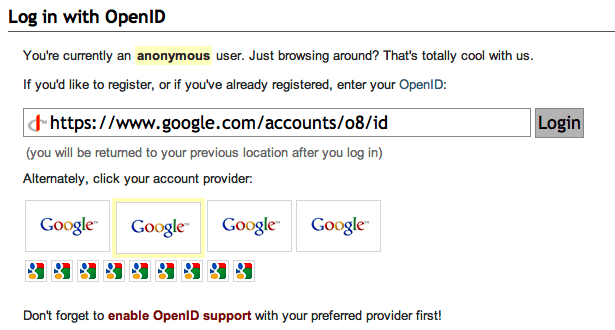
…and the result would be the same thing.
Indeed, it is this kind of lack of choice that makes Facebook Connect so seductively compelling.
And dangerous.
 It’s a frigging button. You can’t mistake it. If you argued that reducing choice increases the likelihood that the user will “get it right” and be able to sign in to your site, you’d be correct.
It’s a frigging button. You can’t mistake it. If you argued that reducing choice increases the likelihood that the user will “get it right” and be able to sign in to your site, you’d be correct.
But, that kind of restriction of freedom of choice impairs healthy competition in the marketplace. And lack of competition is, generally, bad for the health of an ecosystem, and ultimately bad for the consumer.
The harmony in the Yin & Yang of Simplicity and Choice
Ignoring your actual preference for Coke, if this were the universal experience for buying soda, one might argue that simplicity and fewer choices are better:

But having choice is a better overall condition. Even when a popular brand is made more prominent, having alternatives means at least maintaining the illusion of control over one’s destiny:

(Original photo by Bryan Costin shared under the Creative Commons license.)
So the question is, how can we simplify OpenID so that anyone can use it without reducing freedom of choice? Well, what if the backend technology was fundamentally interoperable, but every site simply supported a button, like this:

…and upon clicking it, a new window would pop open and you’d be presented with a box, in which you could type just about anything: an email address, a URL, the name of a social network, your phone number… heck, you could even type your name (and if you were signed into a site like Facebook that leaks basic aspects of your identity), you could select yourself from a list of names and photos and then proceed through the typical OpenID flow to prove that you are who you are, completing the sign in process.
One problem that I’ve observed with OpenID input boxes, to date, is that they look far too similar to another solitary but familiar input box. Namely — the Google search box! …where anything goes:

Given the training that people have learned from using Google, we must balance the need for simplicity with the ability to make an informed personal choice about which identity to present to a site. Needs which are, in many respects, at odds. Yet, the future of OpenID depends on us unraveling these issues and developing suitable interfaces that are streamlined and straight-forward that also enhance individual freedom.
With the recently approved User Interface Working Group, headed up by Allen Tom from Yahoo!, and with the involvement of folks from Facebook and other organizations, I’m optimistic that we will make considerable progress this year.
And that ultimately, no, OpenID need not be hard. Making it so just won’t happen overnight.





 It’s a frigging button. You can’t mistake it. If you argued that reducing choice increases the likelihood that the user will “get it right” and be able to sign in to your site, you’d be correct.
It’s a frigging button. You can’t mistake it. If you argued that reducing choice increases the likelihood that the user will “get it right” and be able to sign in to your site, you’d be correct.



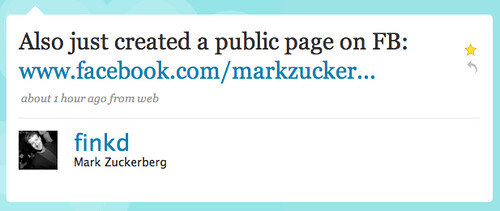






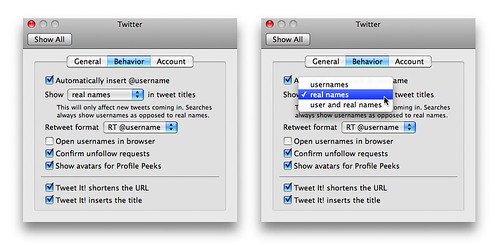










 The day after
The day after 

